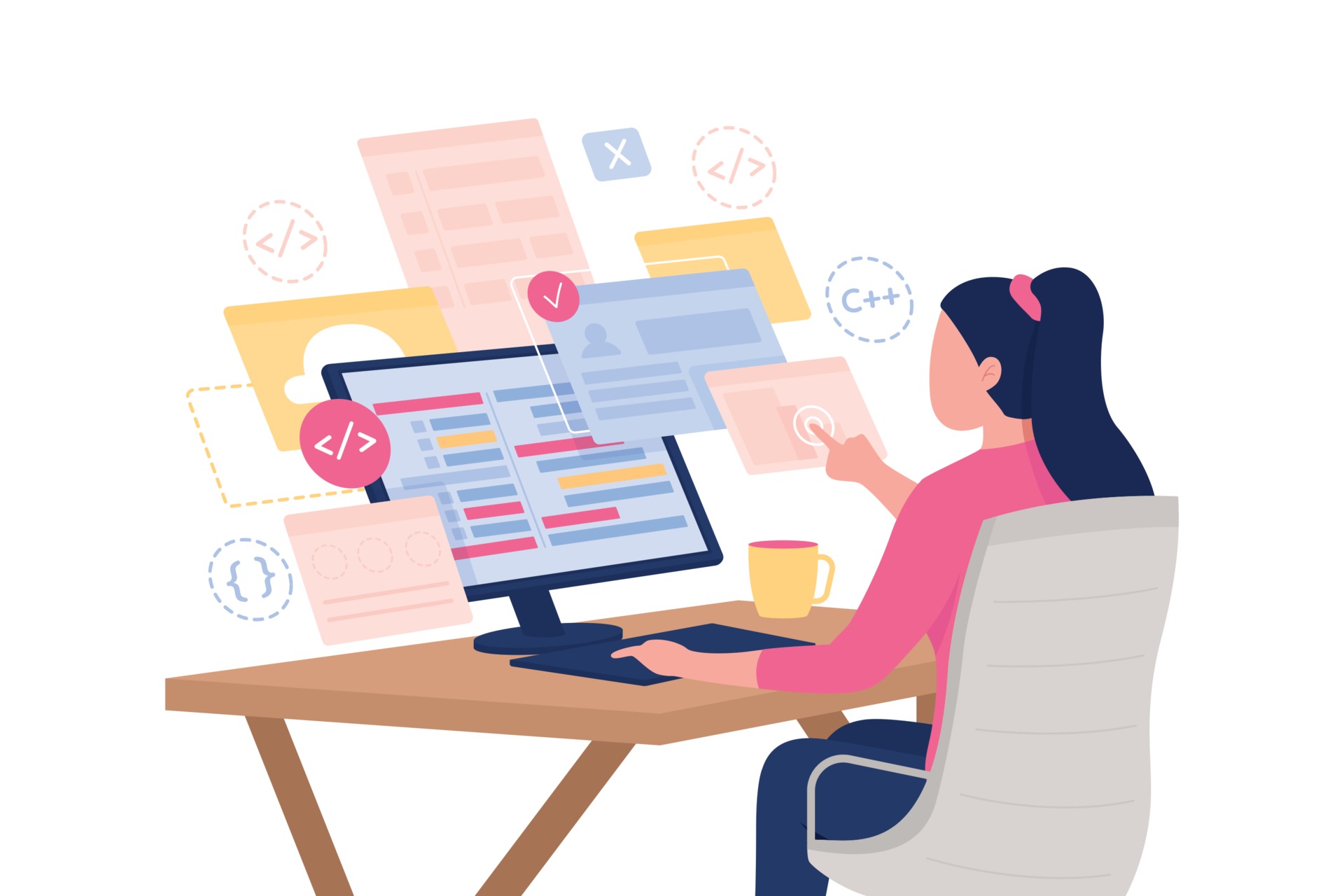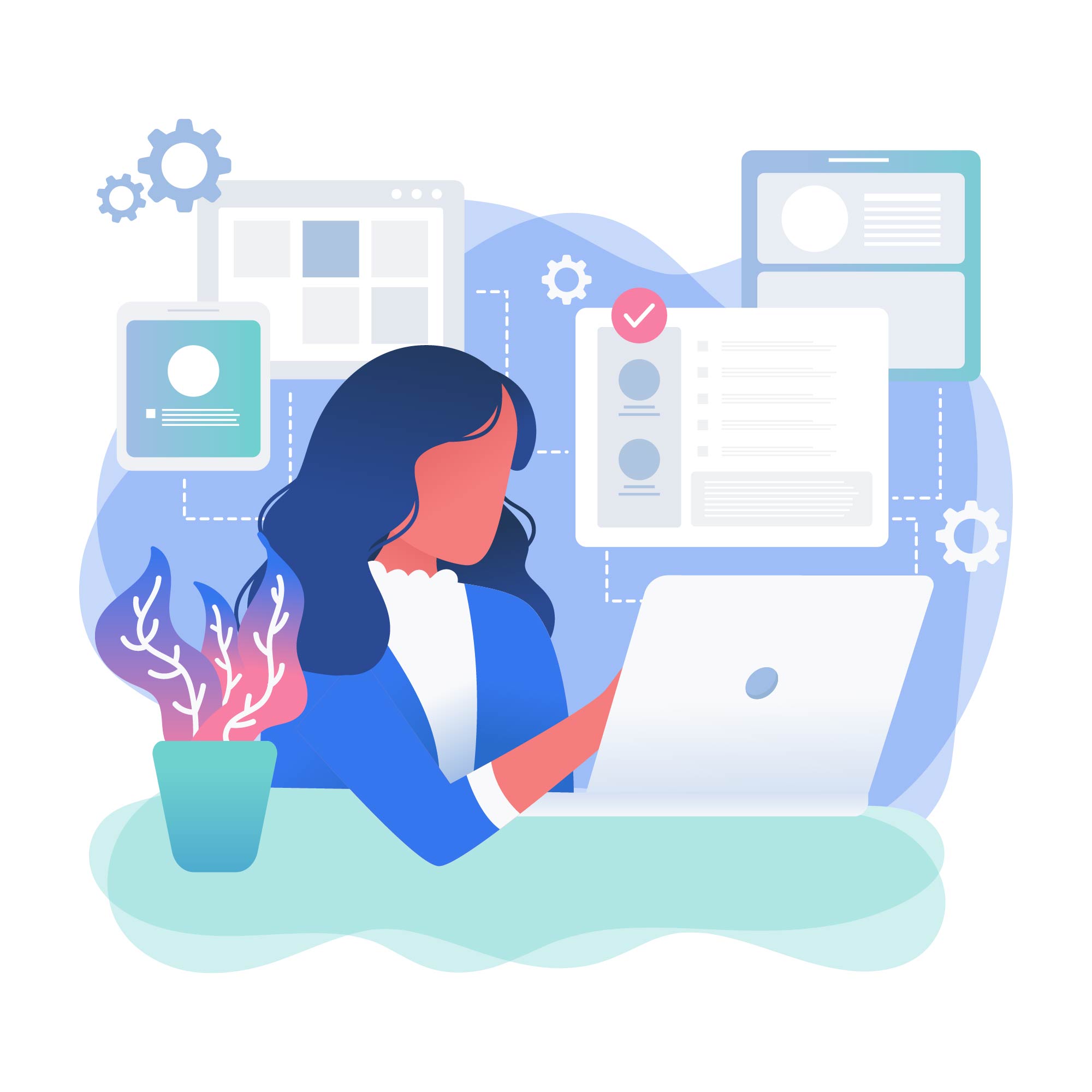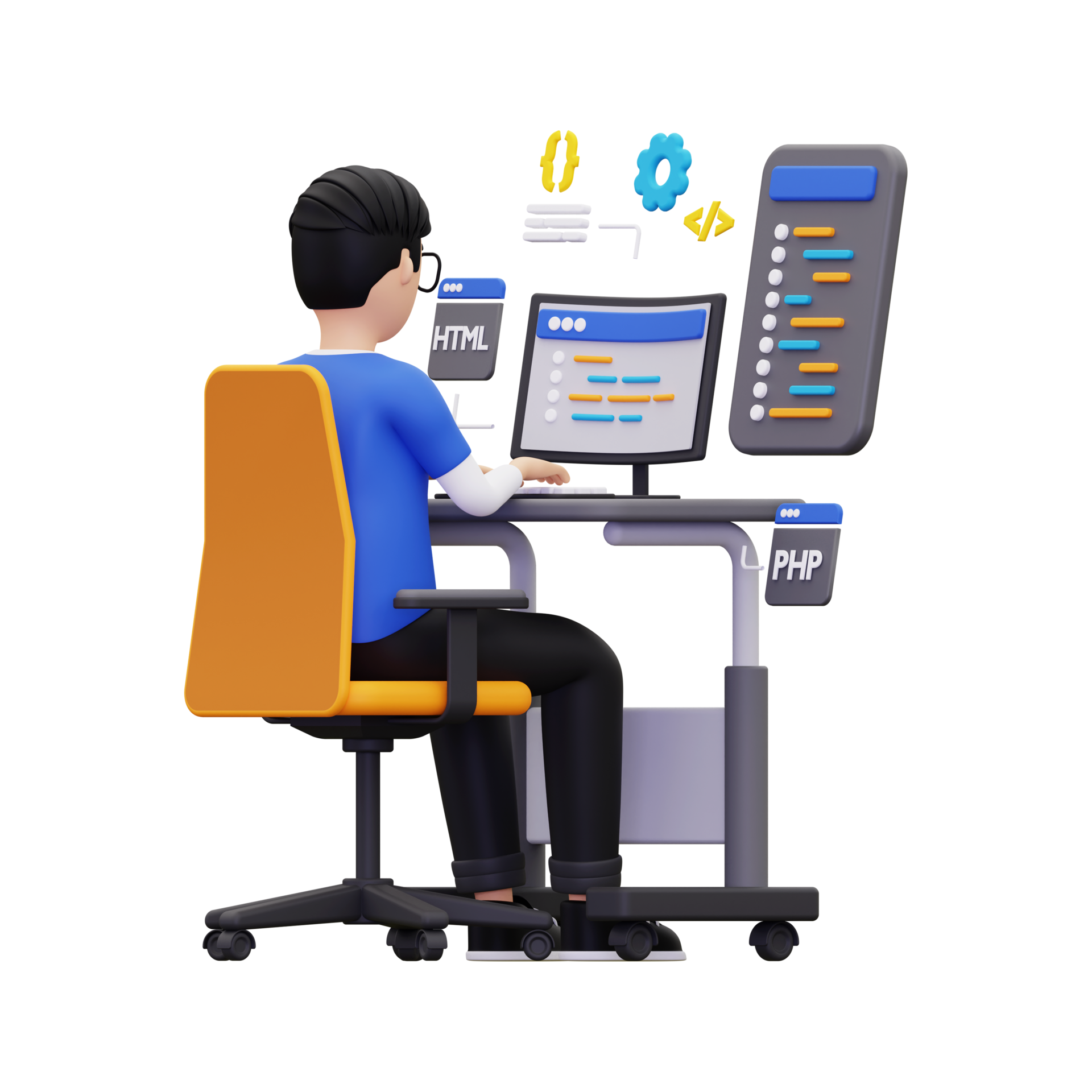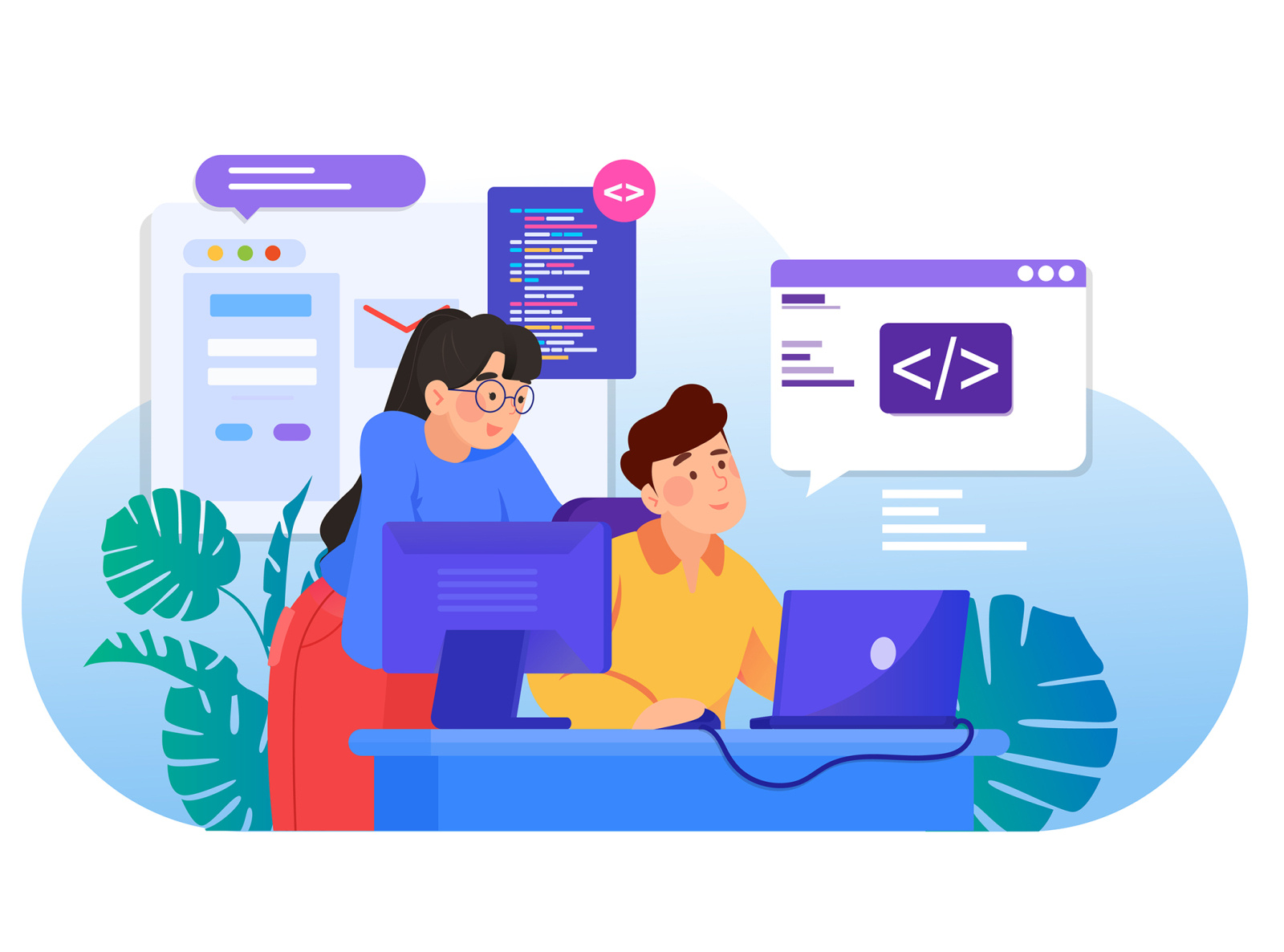In the realm of software development, the role of illustrations has taken center stage. Software developer illustrations, ranging from flowcharts to mockups, serve as invaluable tools that enhance communication, foster collaboration, and streamline the software development lifecycle.
Illustrations empower software developers to convey complex concepts, document requirements, and visualize designs with clarity and precision. By incorporating illustrations into the software development process, teams can bridge gaps in understanding, reduce errors, and accelerate project delivery.
Software Development Process

Illustrations play a pivotal role in the software development lifecycle, enhancing communication, and collaboration among team members. They provide a visual representation of complex concepts, making them easier to understand and discuss.
Documenting Software Requirements
Illustrations can be used to capture and document software requirements. They can help stakeholders visualize the desired functionality, identify potential issues, and ensure that everyone is on the same page.
Designing Software Systems
Illustrations are invaluable in designing software systems. They can help architects visualize the overall structure, identify dependencies, and make informed decisions about the system’s architecture.
Testing Software Systems
Illustrations can be used to create test cases and document the expected results. This helps testers verify that the software is functioning as intended and identify any potential defects.
Types of Software Developer Illustrations

Software developer illustrations serve as visual representations of software development concepts, processes, and artifacts. These illustrations help stakeholders understand complex technical information, communicate ideas effectively, and facilitate collaboration.
There are several types of software developer illustrations, each with its strengths and weaknesses:
Flowcharts
- Flowcharts are diagrams that represent the flow of a process or algorithm using shapes and connecting lines.
- Strengths: Easy to understand, visually appealing, suitable for high-level overviews.
- Weaknesses: Can become complex and difficult to read for large-scale processes.
- Examples: Process flowcharts, decision trees, data flow diagrams.
Diagrams
- Diagrams are visual representations of relationships between entities, such as class diagrams, sequence diagrams, and use case diagrams.
- Strengths: Precise and detailed, provide a structured view of complex systems.
- Weaknesses: Can be overwhelming for non-technical audiences, require a deep understanding of software engineering concepts.
- Examples: Entity-relationship diagrams, state diagrams, component diagrams.
Mockups
- Mockups are realistic representations of software interfaces or products that provide a visual representation of the final product.
- Strengths: Provide a clear understanding of the user experience, facilitate feedback, and support design decisions.
- Weaknesses: Can be time-consuming to create, may not reflect the final implementation.
- Examples: Wireframes, prototypes, user interface mockups.
Best Practices for Creating Software Developer Illustrations

Creating effective software developer illustrations requires a combination of technical expertise and artistic flair. By establishing clear guidelines, using appropriate design elements, and ensuring accessibility, you can create illustrations that effectively convey complex concepts and engage your audience.
Color and Typography
Color and typography play a crucial role in creating visually appealing and effective illustrations. Use a limited color palette to ensure clarity and avoid overwhelming the viewer. Choose colors that are consistent with your brand and relevant to the subject matter.
Similarly, select fonts that are easy to read and complement the overall design.
Layout and Composition
The layout and composition of your illustration are equally important. Strive for a balanced and cohesive design that guides the viewer’s eye through the key elements. Use white space effectively to create visual interest and improve readability. Consider the hierarchy of information and arrange elements accordingly, using size, placement, and color to emphasize important concepts.
Accessibility
Accessibility is essential for ensuring that your illustrations are inclusive and reach the widest possible audience. Use high-contrast colors, avoid text-heavy graphics, and provide alternative text descriptions for images to accommodate users with visual impairments. Additionally, consider using illustrations that are compatible with screen readers for users with disabilities.
Tools for Creating Software Developer Illustrations
Choosing the right tool for creating software developer illustrations is essential for creating high-quality and effective visuals. Here are some popular tools and their features:
Adobe Illustrator
- Industry-standard vector graphics editor
- Powerful drawing and editing tools
- Extensive library of pre-made shapes and symbols
- Excellent integration with other Adobe products
Figma, Software developer illustration
- Collaborative online design tool
- Real-time collaboration and version control
- Extensive library of pre-made components and templates
- Easy-to-use interface for beginners
Sketch
- Vector-based design tool optimized for macOS
- Sleek and intuitive interface
- Powerful symbol and component system
- Excellent for creating user interfaces and app designs
Affinity Designer
- Affordable vector graphics editor
- Powerful drawing and editing tools
- Extensive library of pre-made assets
- Cross-platform compatibility
Canva
- Online graphic design platform
- Easy-to-use drag-and-drop interface
- Large library of templates and assets
- Suitable for creating basic illustrations
Emerging Trends in Software Developer Illustrations

The use of illustrations in software development is rapidly evolving, with emerging trends shaping the way developers communicate and collaborate. Artificial intelligence (AI) and machine learning (ML) are playing an increasingly significant role in creating and analyzing software developer illustrations, automating tasks and enhancing insights.
AI-Powered Illustration Generation
AI-powered tools can generate software developer illustrations from scratch or enhance existing ones. These tools leverage advanced algorithms to analyze codebases, user stories, and other development artifacts to create visually appealing and informative illustrations. AI-generated illustrations can save developers time and effort, allowing them to focus on more complex tasks.
ML-Driven Analysis
ML algorithms can analyze software developer illustrations to identify patterns, trends, and anomalies. This analysis can help developers understand the structure and complexity of their code, identify potential issues, and make informed decisions about design and implementation. ML-driven analysis can also provide insights into developer productivity and collaboration.
Interactive and Immersive Illustrations
Software developer illustrations are becoming more interactive and immersive, allowing developers to engage with them in new and meaningful ways. These illustrations can incorporate animations, simulations, and other interactive elements to provide a more engaging and immersive experience. Interactive illustrations can help developers visualize complex concepts and make informed decisions.
Ending Remarks

As the software development landscape continues to evolve, so too will the use of illustrations. Emerging trends, such as artificial intelligence and machine learning, hold the potential to revolutionize the creation and analysis of software developer illustrations. By embracing these advancements, software development teams can unlock new levels of efficiency, innovation, and user engagement.
Q&A
What are the key benefits of using software developer illustrations?
Software developer illustrations enhance communication, foster collaboration, document requirements, visualize designs, and streamline the software development lifecycle.
What are the different types of software developer illustrations?
Flowcharts, diagrams, and mockups are common types of software developer illustrations.
What are the best practices for creating effective software developer illustrations?
Clarity, conciseness, visual appeal, and accessibility are key considerations for creating effective software developer illustrations.
